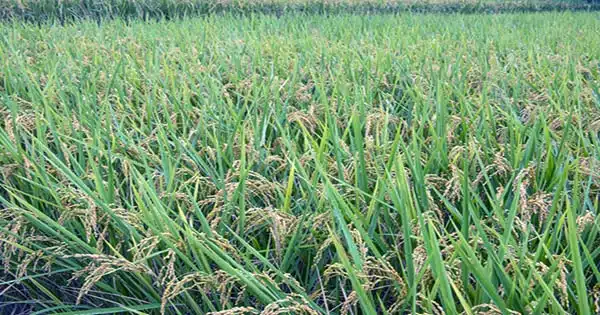According to a new study published in the journal Nature on June 14, researchers from the University of California, Davis, and an international team of scientists utilized the genome-editing technique CRISPR-Cas to generate disease-resistant rice plants.
Small-scale field testing in China revealed that the newly generated rice variety, created through genome editing of a recently found gene, had both high yields and resistance to the fungus that causes rice blast, a devastating disease. Rice is an important crop that feeds over half of the world’s population.
Guotian Li, one of the study’s co-lead authors, found a lesion mimic mutant while working as a postdoctoral scholar in Pamela Ronald’s lab at UC Davis. Ronald is a Distinguished Professor in the Department of Plant Pathology and the Genome Center, as well as the co-lead author.
“It’s a significant step forward that his team was able to improve this gene, potentially making it useful for farmers.” That makes it significant,” Ronald explained.
The finding began in Ronald’s lab, where they produced and sequenced 3,200 unique rice strains, each with its own set of mutations. Guotian identified one of these strains as having dark patches on its leaves.
“He discovered that the strain was also resistant to bacterial infection,” Ronald explained, “but it was extremely small and low yielding.” “These ‘lesion mimic’ mutants have been discovered before, but due to their low yield, they have only been useful to farmers in a few cases.”
Utilizing CRISPR: Guotian resumed his studies after enrolling at Huazhong Agricultural University in Wuhan, China.
He utilized CRISPR-Cas9 to extract the gene responsible for the mutation and genome editing to duplicate the resistance trait, eventually selecting a line that had a high yield and was resistant to three diseases, including the fungus that causes rice blast.
According to Ronald, the new rice plants produced five times greater yield than the control rice in small-scale field trials planted in disease-heavy plots.
“Blast is the most serious plant disease in the world because it affects virtually all rice-growing regions and rice is a huge crop,” Ronald remarked.
Future applications: The researchers intend to replicate this mutation in commercially available rice cultivars. They have only improved this gene in a model variety named Kitaake, which is not extensively produced. They also intend to target the same gene in wheat in order to develop disease-resistant wheat.
“Many of these lesion mimic mutants have been discovered and then put aside due to their low yield.” “We’re hoping that people will look at some of these and see if they can edit them to get a nice balance of resistance and yield,” Ronald explained.















